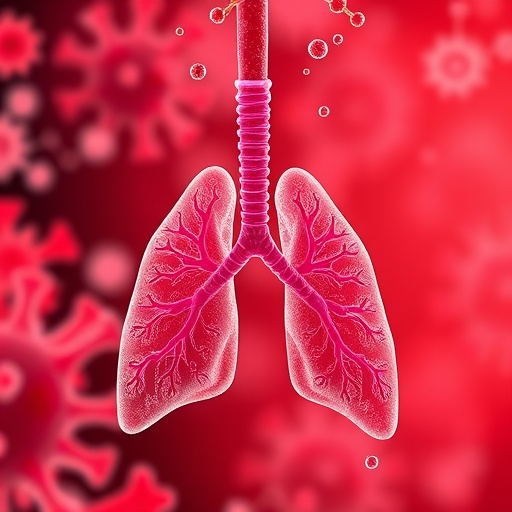Breast Cancer Dominating Oncology Research, Access Disparities: Gen Li, PhD – The American Journal of Managed Care® (AJMC®)

Global Breast Cancer Research Landscape: A Sustainable Development Goals Perspective
Current State of Research and Alignment with SDG 3 (Good Health and Well-being)
A report from the clinical data company Phesi indicates that for the fourth consecutive year, breast cancer is the most researched disease globally. This extensive focus on research and development (R&D) aligns with the objectives of Sustainable Development Goal 3 (SDG 3), which aims to ensure healthy lives and promote well-being for all. The continued investment in understanding the disease, its biomarkers, and specificities is a critical driver of clinical innovation.
Despite this progress, significant challenges hinder the translation of research into universal patient outcomes, impacting the core targets of SDG 3. Key issues include:
- High Trial Attrition: In 2024, the termination rate for Phase 2 trials increased to 31%, up from 29% in 2023. This high attrition rate impedes the development of new, effective therapies.
- Suboptimal Enrollment: Previous data indicates that only 14% of breast cancer trials achieve optimal enrollment rates, slowing the pace of innovation and its delivery to patients.
Challenges in Achieving SDG 10 (Reduced Inequalities)
Significant disparities in clinical trial distribution and patient access to care undermine the principles of Sustainable Development Goal 10 (SDG 10), which calls for reducing inequality within and among countries. The current research landscape is characterized by profound inequities.
- Geographic Concentration: Clinical trials and key opinion leaders are heavily concentrated in the United States and China, with nearly 45% of all activity occurring in these two nations. This leaves smaller countries with limited access to cutting-edge research and treatments.
- Internal Disparities: Even within research-heavy countries like the US and China, vast populations remain underserved. Inequities persist along geographic lines (metropolitan vs. rural areas) and racial and ethnic lines, directly contravening the goal of equal opportunity.
- Barriers to Participation: Low trial enrollment is often attributed to factors that perpetuate inequality, including a lack of awareness of or access to trials, restrictive participation criteria, and systemic mistrust in the medical system among marginalized communities, such as Black women.
The Role of SDG 9 (Innovation) and SDG 17 (Partnerships) in Advancing Equitable Outcomes
Addressing these challenges requires a concerted effort aligned with Sustainable Development Goal 9 (Industry, Innovation, and Infrastructure) and Sustainable Development Goal 17 (Partnerships for the Goals). Technological innovation and multi-stakeholder collaboration are essential to making trial development more inclusive and effective globally.
Strategic Recommendations:
- Leverage Innovation (SDG 9): The application of Artificial Intelligence (AI) and data science can help identify where inequities exist and guide cost-effective, targeted actions. AI can also be used to develop digital patient profiles, potentially reducing the need for placebo groups in clinical trials and addressing ethical concerns.
- Foster Global Partnerships (SDG 17): Overcoming structural inequities requires robust collaboration between governments, global pharmaceutical companies, industry alliances, and charitable organizations. A stronger, coordinated international effort is necessary to ensure that the benefits of the enormous investment in clinical development are distributed equitably to all populations, thereby fulfilling the promise of the Sustainable Development Goals.
Analysis of Sustainable Development Goals (SDGs) in the Article
1. Which SDGs are addressed or connected to the issues highlighted in the article?
- SDG 3: Good Health and Well-being: The entire article revolves around breast cancer, a major global health issue. It discusses research, clinical trials, and access to treatments, all of which are central to ensuring healthy lives and promoting well-being.
- SDG 9: Industry, Innovation and Infrastructure: The article focuses on the state of clinical research and development (R&D) in oncology. It highlights the role of innovation, data science, and Artificial Intelligence (AI) in improving clinical trials and making research more efficient.
- SDG 10: Reduced Inequalities: A primary theme of the article is the significant inequities in healthcare. It explicitly points out disparities in access to clinical trials and treatments based on geography (US/China vs. smaller countries) and race/ethnicity within nations.
- SDG 17: Partnerships for the Goals: The article concludes by emphasizing the need for global cooperation to address the identified inequities. It calls for governments, pharmaceutical companies, industry alliances, and charities to work together to solve these complex problems.
2. What specific targets under those SDGs can be identified based on the article’s content?
-
Under SDG 3 (Good Health and Well-being):
- Target 3.4: “By 2030, reduce by one third premature mortality from non-communicable diseases through prevention and treatment…” The article’s focus on extensive research and clinical trials for breast cancer, a non-communicable disease, directly supports the goal of improving treatment to reduce mortality from the “devastation of the disease.”
- Target 3.8: “Achieve universal health coverage, including… access to quality essential health-care services and access to safe, effective, quality and affordable essential medicines…” The article highlights the failure to achieve this, noting that “significant inequities in access to care and treatments” exist and “many women with metastatic breast cancer worldwide still miss out on innovative therapies.”
-
Under SDG 9 (Industry, Innovation and Infrastructure):
- Target 9.5: “Enhance scientific research, upgrade the technological capabilities of industrial sectors in all countries…” The discussion about breast cancer being the “most studied disease globally” and the use of “data science and AI” to improve clinical development directly relates to enhancing scientific research and technological capability. The concentration of this research in the US and China shows that this enhancement is not yet global.
-
Under SDG 10 (Reduced Inequalities):
- Target 10.2: “By 2030, empower and promote the social… inclusion of all, irrespective of… race, ethnicity, origin…” The article points to a lack of inclusion, citing “ongoing racial and ethnic inequality” and the need to “reach… different ethnic and racial groups” who are currently not well-represented in clinical trials.
- Target 10.3: “Ensure equal opportunity and reduce inequalities of outcome…” The article identifies clear inequalities of outcome, such as “disparate access” to trials and care, with clinical development activities being heavily “concentrated in the US and China,” leaving smaller countries and certain populations behind.
-
Under SDG 17 (Partnerships for the Goals):
- Target 17.16: “Enhance the Global Partnership for Sustainable Development, complemented by multi-stakeholder partnerships…” The article makes a direct call for this, stating that solving the problem “requires the whole society and the government and governments around the world… and many of the resources from global pharmaceutical companies working together towards those goals.”
3. Are there any indicators mentioned or implied in the article that can be used to measure progress towards the identified targets?
- Geographic Concentration of Research: The article states that “almost 45% of key opinion leaders and clinical trials being conducted in those 2 countries [US and China].” This figure serves as a direct indicator of the inequality in scientific research infrastructure and activity (relevant to SDG 9 and SDG 10).
- Clinical Trial Attrition Rate: The report indicates that “more than 1 in every 3 trials (31%) were terminated in phase 2 in 2024, rising from 29% in 2023.” This percentage is a key performance indicator for the efficiency and success of R&D efforts (relevant to SDG 9).
- Clinical Trial Enrollment Rate: The article mentions that “only 14% of breast cancer trials met optimal enrollment rates.” This statistic is a critical indicator of patient access, awareness, and trust in the medical system, reflecting issues of inclusion and equity (relevant to SDG 3 and SDG 10).
- Representation in Clinical Trials: While not providing a specific number, the article implies a lack of racial and ethnic diversity in trials by mentioning “a mistrust in the medical system from Black women” as a reason for low enrollment and the “ongoing racial and ethnic inequality” in the US. Measuring the demographic breakdown of trial participants would be an indicator for SDG 10.
4. Table of SDGs, Targets, and Indicators
| SDGs | Targets | Indicators Identified in the Article |
|---|---|---|
| SDG 3: Good Health and Well-being |
3.4: Reduce premature mortality from non-communicable diseases.
3.8: Achieve universal health coverage and access to quality essential medicines and treatments. |
Implied: Mortality rate from breast cancer.
Implied: Proportion of the population with access to innovative cancer therapies. |
| SDG 9: Industry, Innovation and Infrastructure | 9.5: Enhance scientific research and upgrade technological capabilities. |
Mentioned: Number of clinical trials (Breast cancer is the “most researched disease”).
Mentioned: Clinical trial attrition rate (“31% were terminated in phase 2 in 2024”). |
| SDG 10: Reduced Inequalities |
10.2: Promote the inclusion of all, irrespective of race or ethnicity.
10.3: Ensure equal opportunity and reduce inequalities of outcome. |
Mentioned: Trial enrollment rates (“only 14% of breast cancer trials met optimal enrollment rates”).
Mentioned: Geographic concentration of clinical trials (“almost 45% of key opinion leaders and clinical trials being conducted in [the US and China]”). Implied: Demographic and racial breakdown of clinical trial participants. |
| SDG 17: Partnerships for the Goals | 17.16: Enhance the Global Partnership, complemented by multi-stakeholder partnerships. | Implied: Number and effectiveness of partnerships between governments, pharmaceutical companies, and charities to improve global trial access. |
Source: ajmc.com
What is Your Reaction?
 Like
0
Like
0
 Dislike
0
Dislike
0
 Love
0
Love
0
 Funny
0
Funny
0
 Angry
0
Angry
0
 Sad
0
Sad
0
 Wow
0
Wow
0




















































.jpg.webp?itok=0ZsAnae9#)


























